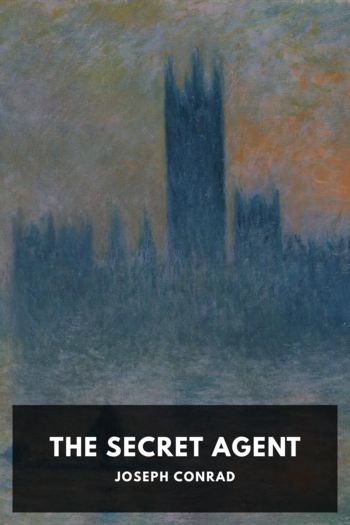Hidden History: Lost Civilizations, Secret Knowledge, and Ancient Mysteries, Brian Haughton [books you need to read .TXT] 📗

- Author: Brian Haughton
Book online «Hidden History: Lost Civilizations, Secret Knowledge, and Ancient Mysteries, Brian Haughton [books you need to read .TXT] 📗». Author Brian Haughton
One hypothesis which has been put forward is that the ball court area was utilized as a ritual space where ceremonies were performed, which carried a similar meaning to the actual ball game. Panels along the side walls of the ball court are decorated with events from ball games, including scenes of players dressed in heavy padding and a particularly gruesome illustration depicting the beheading of a player in front of both teams. Much of the Mayan creation story (the Popol Vuh) is concerned with a ball game played in this world and also in the world of the dead, indicating the religious significance of the game. In one part of the myth, the hero twins play the game for their lives against the lords of the underworld. In another, the use of a ball comprised of a decapitated head encased in rubber is described.
More graphic illustrations of the relevance of the human head in Mayan ritual is provided by the Tzompantli, or the Wall of Skulls, a large, centrallylocated T-shaped stone platform 198 feet long and 40 feet wide. This structure was used as a base for wooden stakes on which the decapitated heads of enemy warriors and sacrificial victims were impaled for public viewing. Its walls are covered in bas-relief sculptures of skulls, as well as carvings of eagles, feathered serpents, and Mayan warriors carrying human heads. This Wall of Skulls was probably designed to display the strength of the Maya and must have presented a fearsome site to invading armies.
In the southern part of the city stands one of the highest accomplishments of Mayan architects at Chichen Itza. This is the 74 foot high Observatory, or El Caracol (the Spanish word for snail, referring to the resemblance of the building's internal spiral stairway to a snail's shell). The Observatory, as it stands today, is actually the ruins of a cylindrical structure, and consists of a tower built on top of a rectangular platform. The building has openings at several points, which
probably served as small windows to enable the observing and tracking of stars and planets. South of El Caracol is the Nunnery, also known by its Spanish name of Las Monjas, a colossal structure measuring at its base 230 by 115 feet with a height of 59 feet. This elaborately decorated building was constructed over a period of several centuries, but functioned as the city's government palace.
It is recorded in the Mayan Chronicles that in A.D. 1221 the Maya revolted against the Maya-Toltec lords then ruling at Chichen Itza. Evidence of destruction has been found by archaeologists in the form of the burning of the Great Market and the Temple of the Warriors. Civil war subsequently broke out, and control of Yucatan moved to Mayapan, 30 miles southeast of Merida. The city of Mayapan became the most important center of the Mayan civilization before the arrival of the Spanish in 1519. After this shift of power in the early 13th century, Chichen Itza went into decline, its citizens moving elsewhere, and when the Spanish came upon the site in 1517 they found only a city of ghosts, its past glories long vanished.
The Sphinx: An Archetypal Riddle
Photograph by Michael Reeve. (GNU Free Documentation License.)
The Great Sphinx at Giza.
The purpose of the Sphinx had now become a little plainer. The Egyptian Atlanteans had built it as their grandest statue, their sublimest figure of remembrance, and they had dedicated it to their Light-god, the Sun.
-Paul Brunton
A knoll of rock, which had been left by the builders of the Great Pyramid when quarrying stone for its inner core, was fashioned in the time of Chepren (Cheops) into a huge recumbent lion with a human head...
-I.E.S. Edwards
These quotes illustrate the contrasting interpretations of the Great Sphinx: the wildly mystical with the coldly pragmatic. Buried for most of its life in the sand, an air of mystery has always surrounded the enigmatic Sphinx, causing speculation about its age and purpose, method of construction, concealed chambers, role in prophesy, and relationship to the equally mysterious pyramids. Much of this theorizing is to the despair of Egyptologists and archaeologists, who alone seek to own the Sphinx and lay claim to its secrets. Perhaps the primary role of this national symbol of ancient and modern Egypt, which stands guard over the Giza plateau, is as it has always been: to stir the imagination of poets, scholars, mystics, adventurers and tourists for century after century. The Sphinx of Giza represents the essence of Egypt.
Facing the rising sun, the Great Sphinx is located on the Giza plateau, about 6 miles west of Cairo, on the west bank of the Nile River. Egyptian rulers worshipped it as an aspect of the Sun God, calling it Hor-Em-Akhet (Horus of the Horizon). The Sphinx sits in part of the necropolis of ancient Memphis, the seat of power for the pharaohs, a short distance from three large pyramids-the Great Pyramid of Khufu (Cheops), Khafre (Chephren), and Menkaura (Mycerinus). The monument is the largest surviving sculpture from the ancient world, measuring 241 feet in length and in parts 65 feet in height. Part of the uraeus (a sacred cobra that protected from evil forces), the nose, and the ritual beard are missing; the beard is now displayed in the British Museum. The extensions at the
side of the head are part of the royal headcloth. Although the head of the Sphinx has been badly affected by thousands of years of erosion, traces of the original paint can still be seen near one ear. It is thought that originally the Sphinx's face was painted dark red. A small temple between its paws contained dozens of inscribed stelae, placed there by the pharaohs in honor of the Sun God.
The Sphinx has suffered greatly from the





Comments (0)